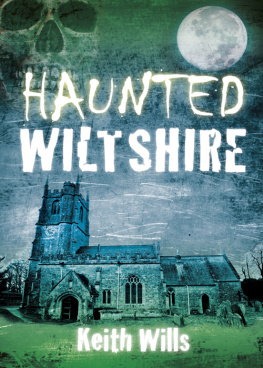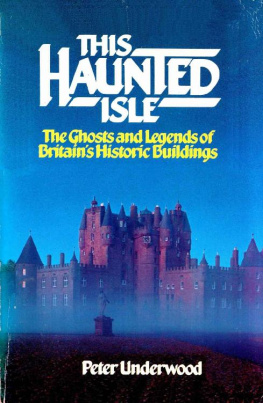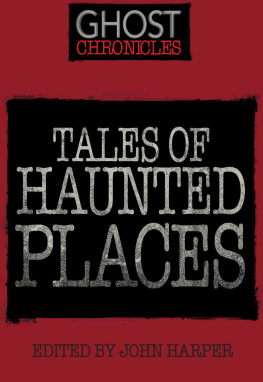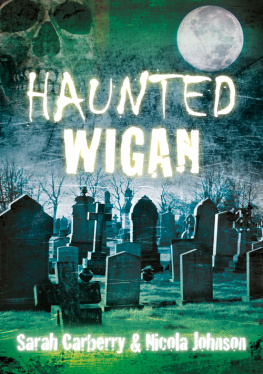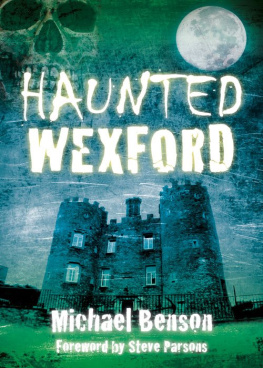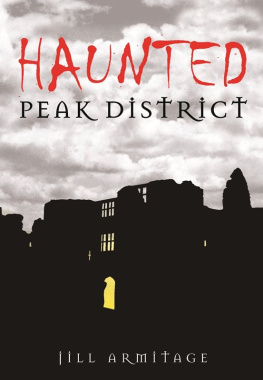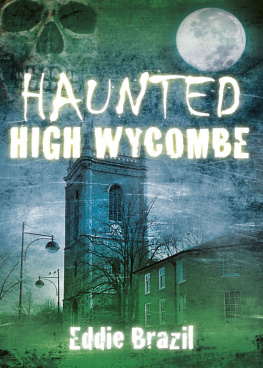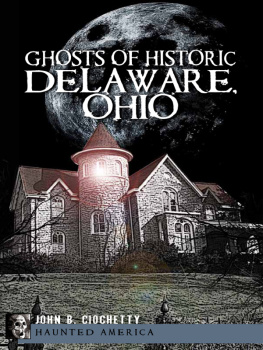For Mum and Dad
CONTENTS
I would like to express my warmest thanks to all those who have helped make this compilation possible: the publicans, the hoteliers, the custodians, the staff and volunteers at English Heritage and National Trust properties. I must also extend my heartfelt thanks to the folk of Wiltshire who were only too happy to spend time regaling me with their chilling encounters.
I would also like to thank Naomi Reynolds, Nicola Guy, Declan Flynn and the editorial team at The History Press for their help and guidance in getting this thing off the ground.
And finally, a very special thanks must go to local artist Christine Bozier for the books illustrations, and for her support, her unfailing patience and her moments of inspiration when I needed them most. Hope the journey wasnt too crazy.
All photographs are my own except the Cross Guns inn ghost photograph, used with kind permission of Roger Jones of Ex Libris Press, Hosts of Ghosts.
Contact the author at:
keith_wills5@msn.com
Contact the illustrator at:
petportraits1.blogspot.com
W ILTSHIRE has a unique beauty, many poets have waxed lyrical describing it as wild, romantic and enigmatic. Artists apply their craft in the hope of capturing the mood of its ancient chalk landscape. It is a magical place which has won the hearts and imagination of thousands, inspired Im sure by 6,000 years of untamed prehistory. One only has to marvel at the mysterious trilithons of Stonehenge and the megaliths of Avebury to be reminded of prehistoric mans enduring legacy and his extraordinary achievements. Wiltshire is a county steeped in folklore, legend and hauntings. Indeed, its plethora of ghosts has gained it a reputation as being one of the most, if not the most haunted county in Britain.
In this book I have catalogued a few of my visits to reputedly haunted locations, the majority of which I have selected for their public access. I have included first-hand accounts from eyewitnesses where possible, plus anecdotal tales passed down over the centuries. They include: the ghostly apparition of the Lady in White, said to haunt the grounds of Avebury Manor where she has a habit of seeking out male visitors as targets for her inappropriate shoulder grabbing; the Blue Lady at the Cross Guns inn Avoncliff, who pops up all too often in the ladies toilets; Lacock Abbey, where a hideous dwarf is said to scamper about the upper floors; Littlecote House, the scene of a brutal infanticide perpetrated by the pernicious Wild Will Darrell in 1575 and where his ghost still haunts the corridors. There is also the fearsome white cat said to stalk walkers along the 5,000-year-old Ridgeway passage and the Ash Lady of St John the Baptist church, Wroughton, said to have been the victim of a premature burial during Victorian times.
MAP OF WILTSHIRES
MOST HAUNTED

( Christine Bozier)
1
MANORS
AND HOUSES
Avebury Manor
Avebury Manor dates from around the mid-sixteenth century, but the area the house occupies is considerably older and in all probability may have had monastic connections. There have been few excavations of note but those permitted by the National Trust have revealed finds which would indicate the area to have been occupied for at least 1,000 years.

Avebury Manor is haunted by four ghosts.
The earliest records of a building in the immediate vicinity date from 1114, when King Henry I granted the estate to his chamberlain William de Tancarville, who in that same year gifted it to the Benedictine French abbey of St Georges de Boscherville, Rouen. A priory house probably made of timber was established soon afterwards and may have stood close to where the current house is now situated. The priory was a small unit, just a few monks eking out a simple existence raising sheep and farming the land.
In 1378 England was at war with France which ultimately spelled expunction for the monks of Avebury. The last prior to leave was Stephen Fosse in 1379, one of many monks expelled from England during that year. A succession of chaplains then took charge of the priory until it finally passed into the hands of Fotheringhay College in 1411.
In 1547, following the Dissolution of the Monasteries (15361541), the college exchanged the estate for other lands. The Crown took possession and granted ownership to Sir William Sharington; owner of Lacock Abbey. At some point the priory was either demolished or remodelled, leaving a small lay house.
In 1549 Sharington was caught defrauding the Bristol Mint where he held the title of under treasurer, but managed to avoid execution by calling in a few favours in high places. He didnt get off scot-free though for he still faced a hefty fine which forced him to sell off some of his assets. One such asset was Avebury Manor, which was purchased off him by William and Mary Dunch in 1551. Evidence now points to the Dunches being largely responsible for building a new house between 1555 and 1580.
In the years that followed, a succession of owners transformed the house through major extensions and modernisation. Sarsen and limestone were used for most of the early building projects. It is likely that the sarsen stone came directly from the world-famous stone circle at a time when standing stones were of little interest other than for building material. Otherwise, the stone would have been quarried from the Marlborough Downs where it could be found in abundance.
Over its 450-year history, Avebury Manor has commanded significant importance in the village, surrounded by high boundary walls and formal gateways. Although not the most prestigious of country houses, it still retains an air of opulence with its impressive gables, deep mullion windows, tall imposing chimneys and beautiful topiary gardens.
As you might expect for a house this old, Avebury Manor has acquired quite a haunted history. It is reputedly inhabited by four ghosts, one of which is a cat, but more about him or her later. Lets start with the ghostly presence of what may be Sir John Stawell.
Sir John Stawell of Cothelstone
The staunch Royalist Sir John Stawell, purchased Avebury Manor from William Dunch in 1640. Stawell played a significant role in the English Civil Wars and raised five regiments at his own expense in support of Charles I. His allegiance to the Crown was to prove his undoing, for during one of his many campaigns in the West Country he fell foul of the Parliamentarians at the Siege of Exeter and was captured in 1646. Later that year he went to London with a copy of his terms of surrender issued by Sir Thomas Fairfax and was instructed to swear on oath not to bear arms against Parliament. He refused, and in so doing was immediately committed to Ely House in Holborn on the advice that his possessions and estates were to be sequestered, which included his beloved Avebury Manor.
On 13 August 1646 he was summoned to the Bar of the House of Commons, where he declined to kneel and take the oath when ordered to do so by the Speaker. He was immediately committed to Newgate Prison on a charge of high treason. His trial took place at Somerset Assizes and was repeated several times, but on each occasion no proceedings followed. In July 1650 he was moved from Newgate to the Tower of London and on 17 December of that year he was brought to trial once more, but the judges neither acquitted nor condemned him. He remained in the Tower of London for the next eleven years. In 1652 Avebury Manor was sold to George Long who in turn leased it to Sir Edward Baynton.
Next page
